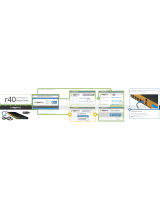FCC Information
Part 15 FCC Rules
This device is compliant with Part 15 of the FCC Rules.
Operation is subject to the following two conditions:
1. This device may not cause harmful interference, and
2. This device must accept any interferences received, including
interference that may cause undesired operation.
Class B Digital Device or Peripheral
Note: This equipment is tested and complies with the limits for a
Class B digital device, pursuant to Part 15 of the FCC Rules.
These limits are designed to provide reasonable protection
against harmful interference in a residential installation. This
equipment generates, uses, and can radiate radio frequency
energy and, if not installed and used in accordance with the
instructions, may cause harmful interference to radio
communications. However, there is no guarantee that
interference will not occur in a particular installation. If this
equipment does cause harmful interference to radio or television
reception, which can be determined by turning the equipment off
and on, the user is encouraged to try to correct the interference
by one or more of the following measures:
1. Reorient or relocate the receiving antenna.
2. Increase the separation between the equipment and receiver.
3. Connect the equipment into an outlet on a circuit different from
that to which the receiver is connected.
4. Consult the dealer or an experienced radio/TV technician for
help.
Modifications
In accordance with Part 15 of the FCC Rules, the user is
cautioned that any changes or modifications not expressly
approved by Polycom, Inc. could void the user’s authority to
operate the equipment. This equipment may not be used on a
coin service or party line.
Installation Instructions
Installation must be performed in accordance with all relevant
national wiring rules.
When using Power over Ethernet (PoE), the equipment is to be
connected only to PoE networks without connections to the
outside plant.
Plugs Acts as Disconnect Device
The socket outlet to which this apparatus is connected must be
installed near the equipment and must always be readily
accessible.
Industry Canada (IC)
This Class [B] digital apparatus complies with Canadian ICES-
003.

























